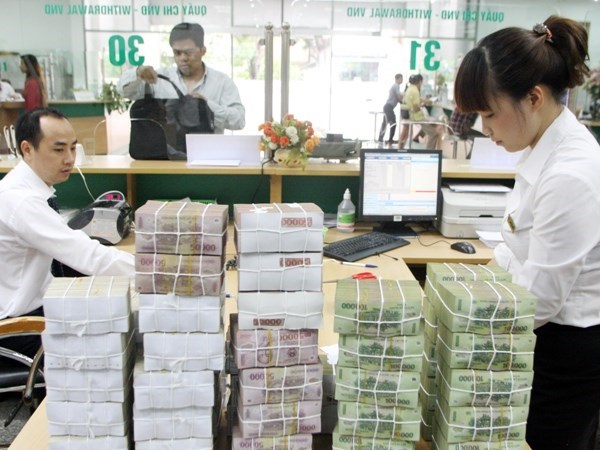Credit growth would continually improve significantly in the remaining months of the year, buoyed by rising investment demands when the COVID-19 pandemic is gradually under control, experts forecast.

Thu Hà
HÀ NỘI — Credit growth would continually improve significantly in the remaining months of the year, buoyed by rising investment demands when the COVID-19 pandemic is gradually under control, experts forecast.
According to reports from the State Bank of Việt Nam (SBV), credit growth kept inching up in the past months, from just 0.2 per cent in February and 1.3 per cent in March to 3.63 per cent in June, 4.03 per cent in July, 4.75 per cent in August and 6.09 per cent in September.
SBV’s deputy governor Đào Minh Tú said the credit growth rate in September showed a notably positive sign in rising capital demands of enterprises.
Echoing Tú, banking expert Nguyễn Trí Hiếu told Việt Nam News businesses were ready to have access to new loans, predicting that credit growth would better recover in the last months of the year, thanks to the need to deploy investment in infrastructure of the Government and production of businesses when the pandemic has gradually been controlled.
Besides, Hiếu said, banks could increase credit growth from boosting consumer loans in the remaining months of the year.
“Consumer lending is potential and is expected to have high demand at the end of the year, so commercial banks can take advantage of this business segment to push credit,” Hiếu said.
Interest rate reduction and preferential lending programmes to the pandemic-affected businesses had also helped businesses to be access to bank loans more easily, Hiếu said, adding that the Government's efforts to both control the pandemic and promote economic recovery had also contributed to increasing the confidence of the business community on the economic recovery.
With economic growth set to pick up more strongly in the final quarter, and also factoring even lower interest rates, international finance information services provider Fitch Solutions has also revised up its credit growth forecast for Việt Nam to 7 per cent, from 6.5 per cent previously.
“This is in view of our forecast for real GDP growth to strengthen in the final quarter of 2020, to give a full year growth of 2.6 per cent, from an average of 2.1 per cent year-on-year over the first three quarters, as well as some tailwinds lower interest rates will nevertheless have on loan demand,” Fitch told Việt Nam News.
Despite its revision, Fitch noted it continued to flag ongoing economic uncertainty as a key factor which will drag on credit demand, especially considering that Việt Nam’s large manufacturing sector is heavily tied to the external outlook, which remains clouded by a resurgence of Covid-19 infections in Europe and the US, key destinations of Vietnamese exports.
Moreover, it said weakness in the services sector would continue despite domestic demand providing some support, given strict travel restrictions globally, and Việt Nam’s continued border closure to international tourist arrivals. A weak economic environment does not bode well for the creditworthiness of many borrowers.
Fitch expects the SBV to make further monetary easing to have a limited impact on growth support over the near term, given already signs of excess liquidity in the banking sector, with loan demand being weak due to ongoing economic uncertainty. Short-term inter-bank lending rates which has fallen far below the policy discount rate also suggest already excess liquidity in the banking sector, which further informs our view for additional interest rate cuts to provide limited support to credit and economic growth.
The SBV cut its policy discount and refinancing rates by 50 basis points to 2.5 per cent and 4 per cent, respectively, on October 1. Due to weak demand for credit, the SBV has lowered its policy rates four times and cut its interest rate caps thrice over 2020 thus far.
In addition to cutting its two key policy rates early this month, the SBV also announced cuts to a range of other interest rates. Accordingly, the overnight interest rate has been cut from 5.5 per cent to 5 per cent, and interest rate via open market operations has felt from 3 per cent to 2.5 per cent. The maximum lending rate for short-term loans at banks has also felt to 4.5 per cent, from 5 per cent.
Despite efforts to boost lending, Fitch expects banks to continue enforcing tighter loan disbursement standards to safeguard against a sharp deterioration in asset quality, with this acting as another impediment to faster loan growth.
SBV’s governor Lê Minh Hưng recently also required that banks must still meet lending standards to ensure the safety and stability of the financial and banking system while simplifying lending procedures to help the pandemic-affected firms easily access preferential interest rate loans. — VNS
- Tags
- banking
- credit growth





